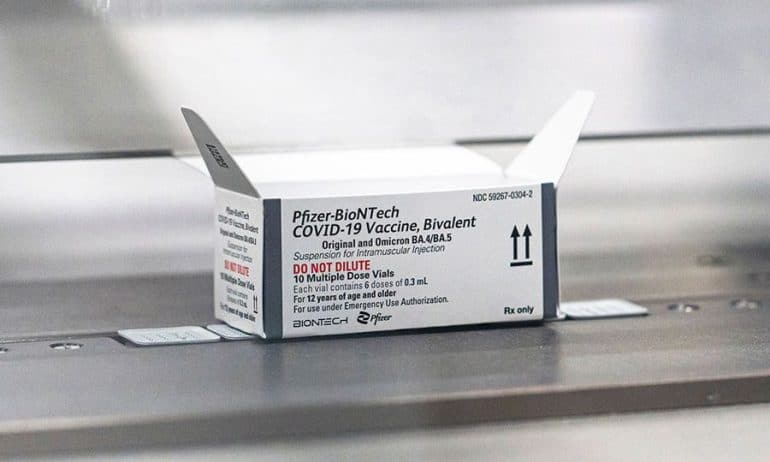The booster doses of the Pfizer/BioNTech and Moderna vaccines against COVID-19 which have been modified to target the BA.4 and BA.5 subvariants of the 'Omicron' mutation received US Food and Drug Administration (FDA) approval yesterday and are expected to be released soon.
How are the new vaccines different from the original ones and how effective are they? Two University of South Carolina professors of pathology, microbiology and immunology answer 5 crucial questions.
1. What is different about updated vaccines?
The new vaccines are improved versions of the original vaccines against it COVID-19 introduced in late 2020. They use the same mRNA technology as the original vaccines. Their main difference is that the new vaccines can encode the spike protein of both the original strain of SARS-CoV-2 and the Omicron mutation variants. As of late August 2022, the BA.4 and BA.5 sub-variants dominate worldwide. In the US currently 89% of infections are caused by BA.5 and 11% are caused by BA.4.
2. How do new vaccines activate the immune response?
In the infection of COVID-19 the virus uses the spike protein to enter cells. The spike protein triggers the production of so-called neutralizing antibodies, which bind to it and prevent the virus from invading other cells. But when the virus mutates, the antibodies previously produced in response to it can no longer bind effectively to the mutated spike protein. In this respect, the SARS-CoV-2 virus acts like a chameleon by escaping the immune system. Continuing mutations are, after all, the reason why antibodies produced in response to the original vaccine strains have become less effective over time at preventing infections from the new variants.
3. How effective will the new vaccines be?
There are no human studies yet on the effectiveness of the new updated vaccines in preventing reinfections and providing long-term immune protection. However, in human clinical trials and laboratory studies, both Pfizer/BioNTech and Moderna found that the version of the new vaccine, which was directed against the original SARS-CoV-2 virus and an earlier Omicron strain, BA.1 , elicited a strong immune response and provided greater protection against both the parent strain and the BA.1 variant.
In addition, the companies reported that the same vaccine combination generated a significant antibody response against the newer BA.4 and BA.5 subvariants, although this response was lower than that against BA.1. Based on the available evidence from previous vaccines, it is highly likely that new booster versions will continue to offer strong protection against severe disease that can lead to hospitalization or death. But whether they will protect against reinfection and primary infection remains to be seen in practice.
4. Will they only be used as booster doses?
Updated vaccines can only be used as boosters at least two months after completing the initial vaccination regimen. Moderna's vaccine is approved for use in people age 18 and older, while Pfizer's vaccine is for people age 12 and older. The new vaccines contain a lower dose of mRNA and are thus only intended as boosters. That is, people who have never been vaccinated against it will not be able to receive them COVID-19.
5. Will they protect against future variants of the virus?
How well the updated vaccines will perform against new variants that may arise will depend on the nature of future spike protein mutations. If it is a small mutation compared to the original strain or the BA.4 and BA.5 variants, the new doses will provide good protection. However, if a hypothetical new strain possesses entirely new mutations in its spike protein, then it is possible that the virus could once again evade immune protection.
On the other hand, the successful development of updated vaccines demonstrates that mRNA technology is innovative enough that – within a few months of the appearance of a new variant – it is now possible to develop and market new formulations specifically designed to combat an emerging variant.
Source: the Conversation
